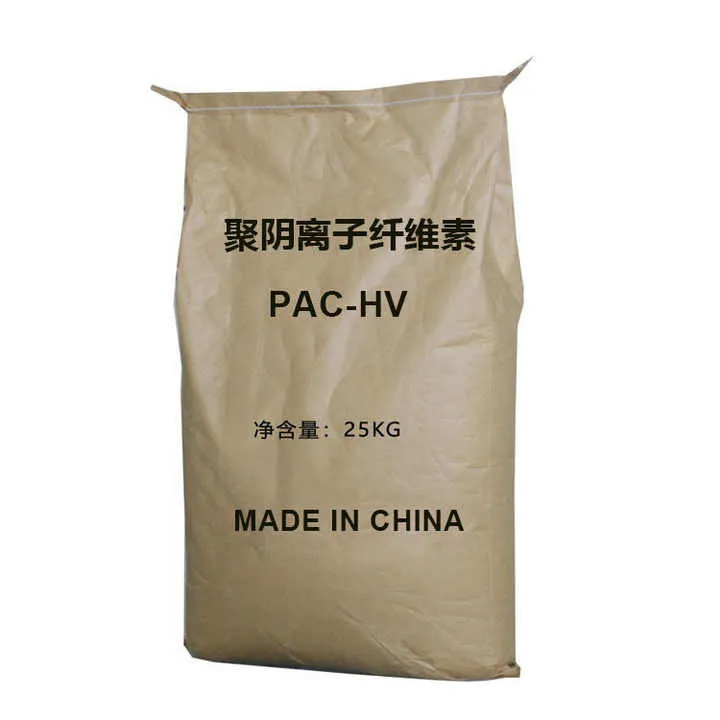
Poly Anioniccellulose (PAC) | Fluid-Loss & Salt Tolerance
Field Notes on Poly Anioniccellulose (PAC): what operators actually ask for
If you’ve spent a week on a rig, you already know the rule: keep filtrate low, keep shales calm, keep costs steady. That’s where Poly Anioniccellulose (PAC) quietly earns its keep. It’s a highly purified, water‑soluble cellulose ether (usually sodium salt), white to light‑yellow, odorless, and yes—soluble in cold and hot water. It’s become the default polymer in salty systems, from onshore salt beds to offshore brines. Many customers say it’s the “no‑drama” additive they trust when wells get tricky.

Industry trends (quick take)
Two clear moves: higher brine salinity tolerance and cleaner formulations. Offshore projects are pushing for predictable fluid loss under high TDS; unconventional plays want better shale integrity without heavy dosing. Actually, we’re also seeing tighter QA—suppliers win bids by showing reproducible API/ISO test data, not just a datasheet blurb.
Typical technical specs (field-friendly)
| Property | PAC-LV (≈ low viscosity) | PAC-HV (≈ high viscosity) |
|---|---|---|
| Appearance | White–light yellow powder | White–light yellow powder |
| Purity (assay) | ≥ 95% (typ.) | ≥ 95% (typ.) |
| Moisture | ≤ 10% | ≤ 10% |
| pH (1% soln) | 6.5–8.5 | 6.5–8.5 |
| Brookfield viscosity (2% soln, 25°C) | ≈ 20–50 mPa·s | ≈ 200–800 mPa·s |
| API fluid-loss reduction (3–10 g/L) | to ≤ 10–12 mL (often lower) | to ≤ 8–10 mL |
| Salt tolerance | Stable in NaCl/CaCl2 brines | Stable in NaCl/CaCl2 brines |
Note: real‑world use may vary with brine composition, solids loading, temperature, shear history, and biocide/oxidant exposure.
Where it’s used
- Saltwater and offshore drilling fluids (primary fluid‑loss control, shale inhibition assist).
- Workover/completion brines (cleaner filtrate, better formation compatibility).
- Make‑up pills and lost‑circulation blends, when finer bridging and tight filtrate are needed.
How it’s made (short version)
Base cellulose is alkalized, then etherified (introducing anionic carboxymethyl‑type groups) to raise substitution and uniformity. After neutralization and washing, it’s dried, milled, and screened. Labs verify substitution level, purity, and salt‑brine performance.
Testing standards: API RP 13B‑1 for rheology/filtrate, ISO 13500 alignment for drilling‑fluid materials. Some buyers also request microbial count and heavy‑metal screening. Service life: typically 24 months in sealed bags; in fluid systems, performance holds to ~120–150°C (some grades ≈ 160–180°C) depending on salts and oxygen/oxidants.

Advantages you actually notice
- Low filtrate with light dosage, even in high‑TDS brines.
- Smooth rheology—less spiky than some synthetic copolymers, easy to thin/control.
- Clean solids control; fewer high‑molecular tails plugging screens.
- Good compatibility with starches, PAC/CMC blends, and bridging agents.
Vendor landscape (my quick comparison)
| Vendor type | Strengths | Watch‑outs | Lead time/Price (≈) |
|---|---|---|---|
| Global chemical majors | Consistent QA, global warehousing | Higher price; rigid MOQs | 2–6 weeks / $$$ |
| Regional suppliers | Fast response, localized blends | Variable lot‑to‑lot data | 1–3 weeks / $$ |
| Specialist cellulose‑ether makers (e.g., Hebei, China; Origin: Room 2308, Dongsheng Plaza 2, No. 508 Zhongshan East Road, Chang’an District, Shijiazhuang) | Customization (LV/HV, DS tuning), competitive cost | Need clear specs and test protocols | 1–4 weeks / $–$$ |
Ask for API RP 13B‑1 test sheets per lot, plus salt‑brine viscosity curves. Real‑world results may vary by solids, temperature, and shearing.
Customization and QC
Common options include LV vs. HV grades, tailored degree of substitution, faster-hydrating milling, and anti‑caking packages. QC usually covers moisture, purity, DS, particle size, Brookfield viscosity, API filtrate (with/without salt), and thermal aging (e.g., 16 hr @ 150°C).
Mini case study
Offshore brine system (NaCl 20%): switching from generic polymer to Poly Anioniccellulose (PAC) LV at 6 g/L cut API filtrate from 18 mL to 9 mL and reduced screen blinding. A superintendent told me, “Surprisingly, we used less to get the same flat curve.” Not earth‑shattering, but it saved rig hours on conditioning.
Bottom line: If your fluid program needs predictable low filtrate in salt, Poly Anioniccellulose (PAC) remains a safe, economical lever—especially when you get hard data aligned to API RP 13B‑1 and your actual brine chemistry.
- API RP 13B‑1: Recommended Practice for Field Testing Water‑Based Drilling Fluids. American Petroleum Institute.
- ISO 13500: Petroleum and natural gas industries — Drilling fluid materials — Specifications and tests.
- Drilling Fluids Processing Handbook (G. R. Gray et al.), Elsevier; practical polymer/filtrate guidance.
- SPE Technical Literature on polymer fluid‑loss control in brines (overview papers; performance vs. salinity and temperature).
-
Reliable Powdered Cellulose Supplier: Quality, Sustainability & InnovationNewsNov.24,2025
-
Find Trusted Microfibrillated Cellulose Suppliers for Sustainable Industrial SolutionsNewsNov.24,2025
-
Leading Methocel Suppliers: Quality, Innovation & Sustainability in Methylcellulose SupplyNewsNov.23,2025
-
Reliable Hydroxyethylcellulose Suppliers for Industry & Sustainability | Tangzhi HPMCNewsNov.23,2025
-
Top Ethyl Cellulose Supplier – Quality, Sustainability, and Industrial SupportNewsNov.23,2025
-
Trusted CMC Powder Suppliers for Food, Pharma & Industrial Use | Tangzhi HPMCNewsNov.22,2025





















